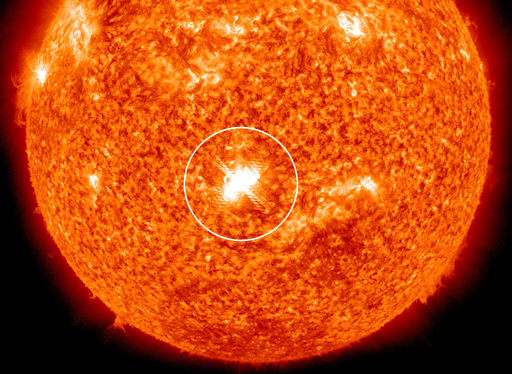On Feb. 13th at 1738 UT, sunspot 1158 unleashed the strongest solar flare of the year so far, an M6.6-category blast. NASA's Solar Dynamics Observatory recorded an intense flash of extreme ultraviolet radiation, circled below:

© NASA/SDO
The eruption produced a loud blast of radio waves heard in shortwave receivers around the dayside of our planet. In New Mexico, amateur radio astronomer Thomas Ashcraft recorded
these sounds at 19 to 21 MHz. "This was some of the strongest radio bursting of the new solar cycle," he says. "What a great solar day."
Preliminary coronagraph data from STEREO-A and SOHO agree that the explosion produced a fast but not particularly bright coronal mass ejection (CME). The cloud will likely hit Earth's magnetic field on or about Feb. 15th. High-latitude sky watchers should
be alert for auroras.
The source of this activity, sunspot 1158 is growing rapidly. Click
here to launch a 2-day movie.
Barely visible when the weekend began, the active region is now more than 100,000 km wide with more than half-a-dozen Earth-sized dark cores scattered beneath its unstable magnetic canopy. More Earth-directed eruptions are likely in the hours ahead.
If I understood the "Electrical Universe" theories presented on sott.net, this blast (and the upcoming ones) mean that some rather big phenomenon (eruption, cyclone, big quake) will happen in the next few days ?
Or did I miss something ?